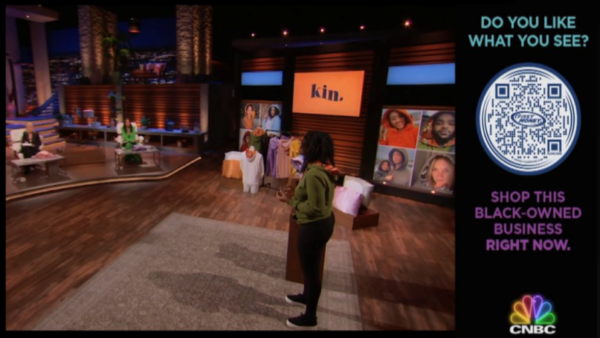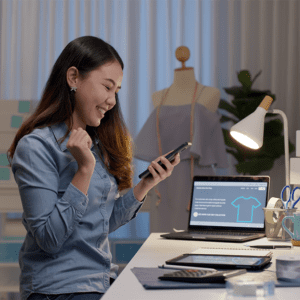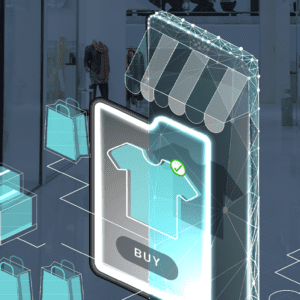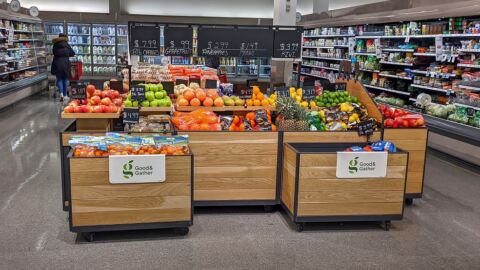There’s been a lot of anticipation surrounding livestream shopping in the U.S., based largely on its success in China. But so far that anticipation has yet to crystallize into livestreaming becoming the West’s next powerhouse shopping format, as many have predicted.
Livestreaming accounted for more than 17% of all ecommerce sales in 2022 in China, but in the U.S. it made up just 2% of ecommerce last year. While that’s not a number to sneeze at — it represents $17 billion in sales — it’s also nowhere near the point of taking over the airwaves. In fact, as of April of this year, just 18% of U.S. adults reported having participated in live shopping, according to research from Bizrate Insights and Insider Intelligence.
Indeed, NBCUniversal executive Evan Moore believes that livestreaming’s time may never come in America. That’s not necessarily due to any flaws in the format itself, but rather because another, perhaps more compelling (at least for U.S. viewers) form of video commerce is rapidly approaching maturation in the West — shoppable TV.
Why Shoppable TV Might Steal Livestreaming’s Thunder
“[Livestreaming] has been massive in other parts of the world, like China and South Korea, but those are completely different markets than the U.S. right now,” said Moore, SVP of Commerce Partnerships at NBCUniversal, speaking at the Retail Innovation Conference and Expo in June 2023. “In the same way that other nations leapfrogged desktop computing and went directly to mobile, I think the media consumption habits of audiences in those [primarily Asian] countries have leapfrogged premium content and gone straight into social content and livestreaming. More of those people, for the first time, are getting access to digital media, and the first thing they’re consuming is small-screen, livestreamed content on social media.
Advertisement
“The other thing that’s unique to those markets that doesn’t exist [in the U.S.] is that oftentimes you’re dealing with rural populations that don’t have access to a retail footprint where they can get a lot of the brands or products that they’re interested in,” Moore added. “That’s not a problem that exists as much in the United States. Also, the U.S. consumer has much more trust and much higher expectations of premium content. In fact, we’re having an emerging trust problem right now around the content that we receive on social platforms, and I think that trust gap is reflected in the struggle that you’re seeing on social platforms to scale up their commerce strategies.”
Not to mention, as Moore pointed out and as and many creators and brands are discovering, “content creation is expensive and difficult, plus building an audience around your content offering takes a long time and a lot of investment.” Moore pointed to Gwyneth Paltrow’s lifestyle brand Goop, where he worked prior to joining NBCU: “Goop spent something like eight years building its audience before they ever started moving into ecommerce, and that was for a very niche audience and a very niche set of subjects,” making it somewhat easier, said Moore.
By contrast, for an organization like NBCU and other major networks and producers, content is their core competency, so audience recognition and trust is already baked in. It’s the ecommerce bit that is outside of their wheelhouse, but thanks to new developments in third-party marketplaces and digital connectivity, it’s become possible for non-endemic brands like a TV network to simply plug into ecommerce capabilities developed by third-party solutions.

This is what NBCU is doing with its own shoppable TV efforts, which are centered on its new third-party marketplace (built on the Mirakl platform) as well as integrations with parent company Comcast’s new X1 cable set-top box, which brings together television programming with apps and social media features, much like Roku or Apple TV.
NBCU is of course not the only company moving into the shoppable TV space:
- Amazon is continuing to build out its Prime X-Ray functionality;
- LG is experimenting on the hardware side in partnership with video commerce solution TheTake;
- YouTube continues to roll out new shopping features; and
- Roku has teamed up with a number of retailers, including Walmart and Best Buy, for shoppable experiences and just entered a partnership with Shopify that opens up TV commerce capabilities for the thousands of merchants operating on that platform.
Sarah Monahan, Head of Retail and Ad Sales at Roku, who previously worked at Snap, believes that it’s the “live” element of livestreaming that has prevented it from becoming the commerce juggernaut predicted for the U.S.: “We’re a culture that is so driven by, ‘I want my content when I want it, how I want it,’ so to me the idea of a QVC-like shoppable, on-demand experience in the future might be more intriguing than something that [relies on catching my attention by chance] when I’m an extremely busy individual with nine different devices and the attention span of a goldfish,” Monahan said in an interview with Retail TouchPoints. “I do wonder if [livestreaming] will just always be sort of niche. When I worked in social, I saw it work so well, but it was [typically around] an exclusive drop, [which created] that scarcity story and that FOMO moment.”
How to Get in on the Shoppable TV Action
Whether or not livestreaming eventually takes off in the U.S., shoppable TV certainly seems primed to: “My prediction is that within three to five years, shopping from television will be a ubiquitous experience,” said Moore. “Like we have done in the past, our industry will optimize the purchase experience and make it as easy to buy on your television screen as it is today to purchase on your computer or your mobile device.”
For brands looking to dip their toes in the waters of shoppable TV, Moore offered three different paths worth exploring:
1. Start experimenting with shoppable ads on connected TV (CTV) platforms. In fact, NBCU just launched a self-serve platform for brands to advertise on its CTV app Peacock, and many other streaming services have similar offerings. “For many brands, television can seem like an imposing channel to start advertising on, but it’s never been easier for a brand to start advertising on television,” said Moore. For digitally native brands the CTV advertising experience will feel incredibly familiar, with similar targeting and measurement capabilities to those on search and social platforms.
2. Look into product placement opportunities. With the digital connectivity of CTV, product placement now goes well beyond a simple brand awareness play, because platforms can offer consumers the opportunity to buy products after they see them in the hands of their favorite TV personality. For its reality series Love Island, Moore’s team partnered with the show’s producers to place products like cosmetics, skincare items or beach accessories into the show. Then at the end of each episode consumers were directed to a website where they could shop for the products.
The best part? “There’s almost zero cost for entry,” said Moore. Brands typically get products placed on shows through a trade-off process that simply requires them to provide free product. Of course, there are advertising add-ons (in the case of NBCU at least) where you can boost the profile of your product with on-screen mentions, guaranteed screen time or shoppable ad integrations.
3. Join marketplaces connected to television providers, like NBCUniversal Checkout. As Moore explained, the company’s marketplace is open to any brand (subject to approval by NBCU), and being present in its ecosystem makes it more likely that your products will be featured in shoppable TV opportunities. For example, Moore and his team are now working to connect marketplace products with shoppable callouts in NBCU programming (partly through AI-enabled pairing) to power things like “Shop the Look.”
For brands that still see potential in livestreaming, Moore has one piece of advice from a legacy content brand: “Livestreaming still needs to be entertaining,” he said. “It’s not [the case that] because there’s a new format to deliver the content that all of a sudden all the old stuff about creating entertainment goes out the window. All those same skills and tools are still required to actually entertain an audience, and if it’s not entertaining, nobody’s going to buy anything.”
















